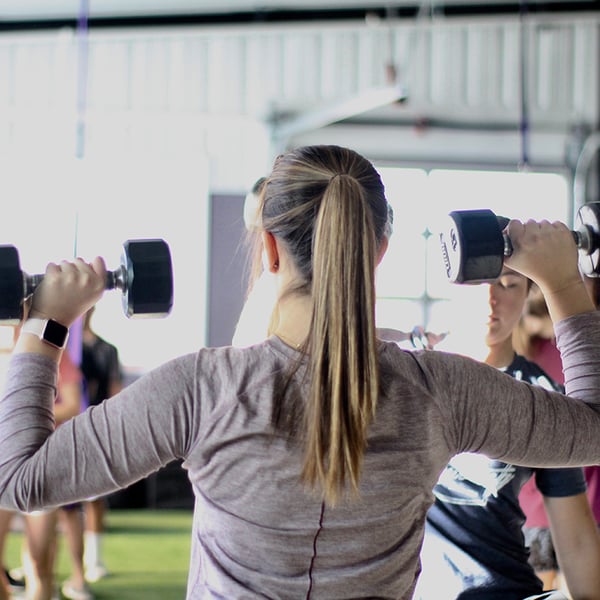The Purpose of Team Strength
Team Strength Director Nate Smock explains why consistency is key in training and the other aspects of what makes our Team Strength program great.
BY Hannah Buchholz
written by Team Strength Director, Nate Smock
The goal of the team strength class at Lutheran High School is to help students maximize their God-given athletic potential and physical capabilities. We focus on accountability, hard work, and encouragement of others. In team strength, students learn to maximize team and individual goals, support others, and motivate themselves, all while adhering to the teachings of Jesus Christ. Our hope is for our student-athletes to be compassionate disciples on and off the field.
Strong, Faster Athletes
Students master the fundamentals of weightlifting, speed, and agility so they can progress to more difficult training. Just as we must master addition and subtraction before learning multiplication and division, we must master the basics of strength and conditioning. Only then can students safely move on to more complex training. Our students learn proper techniques to maximize athletic development and lower the risk of injuries in the weight room.
As a coach, my job is to develop strong and highly conditioned athletes who are better players in their specific sports. To enhance athletic performance, students increase their bio-motor abilities of:
- strength
- speed
- endurance
- coordination
- flexibility
- Specific
- Adaptation to
- Imposed
- Demands
An athlete’s body adapts to what it trains for. Repetitive stimulus through recurring exercises encourages the body to develop strength, size, coordination, flexibility, and speed. For example, to get better at squatting in the weight room, a student must squat each week to train the muscles and develop lower body strength.

Injury Prevention
Our workout programs are consistent, but adjustments are made based on an athlete’s routine, current sport, injury history, individual goals, and team goals. Modifications are made to enhance athletes' performance while they're in season. Communication between coaches is ongoing to ensure athletes are not being under or over-trained.
Our training programs are designed to prevent injury. These programs include a focus on lower body corrective exercises that target ankle, knee, and hip stability and mobility. Hamstring strengthening is included to reduce the likelihood of ankle sprains, knee injuries, and hamstring and hip flexor pulls. Core stability work consists of exercises to protect the spine with anterior, lateral, and anti-rotational movements. Upper body corrective exercises are also implemented to prevent shoulder injuries.
In our weight room, the primary exercises to increase our athletes’ power consist of:
- various medicine ball exercises
- plyometrics
- high pull
- power cleans
To increase lean body mass and develop lower body strength, athletes engage in squatting, lunging, and hinge-based exercises to help strengthen the glutes, quadriceps, and hamstrings. Upper body exercises include horizontal, incline, and vertical pressing. We target the largest muscles in the upper body with vertical and horizontal pulls. Throwing-focused athletes perform dumbbell press-based exercises instead of barbell based to reduce risk of shoulder injuries.
As the Director of Strength and Conditioning, my goal is to provide top-notch instruction and athletic training. I take pride in bringing our athletes closer to Christ through my words and actions. I am committed to leading by example, instilling a hard work ethic, caring for my students, and teaching them to support and encourage each other.


.png)

